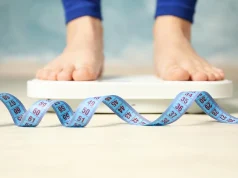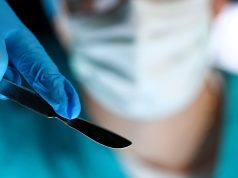Facial paralysis recovery pattern after sx is useful tool for selecting patients for facial reanimation sx
WEDNESDAY, Dec. 2, 2015 (HealthDay News) — For patients who develop facial paralysis after cerebellopontine angle (CPA) tumor resection, the recovery pattern in the early postoperative period is useful for selecting patients for facial reanimation surgery, according to a study published online Nov. 19 in JAMA Facial Plastic Surgery.
Monirah Albathi, M.B.B.S., from the Johns Hopkins University in Baltimore, and colleagues followed 62 patients with facial paralysis and uninterrupted cranial nerve VII who developed facial paralysis (House-Brackmann grade IV, V, or VI) after CPA tumor resection. Patients underwent facial nerve exploration and a masseteric or hypoglossal nerve transfer after a minimum of six months of clinical follow-up and no signs of clinical recovery. Outcomes were assessed during 18 months of follow-up.
The researchers found that 35 patients made a spontaneous recovery. There were no detectable facial muscle movements or electromyographic response to direct facial nerve stimulation suggestive of occult reinnervation in all patients who underwent nerve grafting. The duration of paralysis was shorter with early facial reanimation surgery. Compared with hypoglossal nerve grafting, masseteric nerve grafting resulted in earlier recovery (5.6 versus 10.8 months; P = 0.005).
“Patients can be counseled for facial reanimation surgery as early as six months after surgery because satisfactory facial functional recovery is unlikely to occur when there is no clinical evidence of spontaneous nerve regeneration in the first six months,” the authors write.
Copyright © 2015 HealthDay. All rights reserved.








